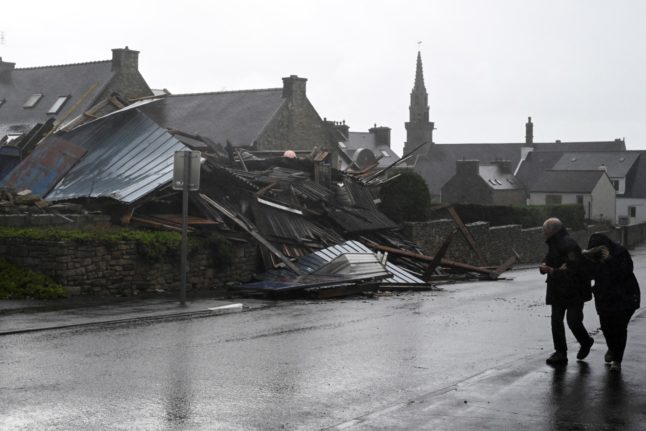As we near the end of 2021, Austria is in another national lockdown and many businesses are closed, but the property market is still riding high.
This means 2022 could be another strong year for property in Austria, although prices might start to stabilise over the next 12 months.
Here’s what you need to know.
READ ALSO: Why are property prices in Austria’s Tyrol region so high?
What can we expect from Austria’s property market in 2022?
Experts are predicting the high demand in the property market to continue throughout 2022, especially in rural areas and in the luxury homes market.
Justin Field, Marketing Director at property consultants Amazing Austria, told The Local: “The movement of people [as a result of the pandemic) created a demand for more country properties so people could work from home.
“Due to the uncertainty over the virus for the coming year, we would expect the local market to stay buoyant with demand for larger family homes in villages.”
READ MORE: Why are property prices in Austria’s Tyrol region so high?
Maizie Delaney Baird, Property Consultant at ski chalet specialists Lindforth, said they are receiving high numbers of enquiries from buyers looking for an investment property, despite the current national lockdown.
Maizie told The Local: “We still have a backlog of clients who wanted to buy last year but had to put their searches on pause. Additionally, many new buyers, especially Germans, have been inspired by the pandemic to invest in their family lifestyles.
“Many of our clients want to buy a lifestyle investment property in Austria – a place they can holiday and “work from chalet” on occasion, but also rent out to earn an income.”
However, Justin at Amazing Austria predicts prices could start to stabilise or even drop during the next year.
He said: “With the uncertainty of corona, and as personal debt ratios in Austria rise, my own thoughts are that the property market will level out in 2022, or even reduce as debt catches up with people and businesses.”
READ ALSO: Can foreigners buy property in Austria?
Property market trends and hot spots in Austria
Since the start of the pandemic in spring 2020, the Alps region in western Austria has been experiencing a real estate boom as both Austrians and foreigners have sought to buy property in the mountains.
Maizie told The Local it is a seller’s market right now with high demand and a shortage of supply.
She said: “With few chalets becoming available to buy there is a lot of competition so buyers need to be quick and determined if they wish to find their dream chalet, especially in the top resorts.
“In terms of prices, property in world-famous and glamorous Lech am Arlberg [Vorarlberg] are some of the highest in Austria and average around €20,000 per square meter.
“Whereas, in sporty Zürs am Arlberg, sharing the same ski region and just five minutes away by car, prices average around €15,000 per square meter.”
FOR MEMBERS: Altbau vs Neubau: What’s the difference and which should I rent in Austria?
Elsewhere in Austria there is a similar story, although prices aren’t rising to the same extent as in the Alps.
For example, in Vienna prices have risen by around 12 percent in all districts to an average of €5,800 per square meter (sqm), and luxury properties have gone up by 23 percent to €14,500 per sqm.
In Penzing, prices have gone up by 19 percent in the past year after the average price per sqm exceeded €5,000. In Donaustadt, prices rose by 15 percent to €4,870 per sqm.
What happened to Austria’s property market in 2021?
In the first half of 2021, the House Price Index (HPI), which measures changes in residential property prices, increased from 142.85 in January to 150.77 in July – an all-time high.
To compare, in June 2020 the HPI in Austria reached 135.11. This was the highest ever recorded level at the time.
Earlier this year, a study by Deloitte showed that new apartment prices in Austria were the most expensive in Europe with a 70 sqm apartment costing an average of 10.6 times the national annual salary.
Gabriele Etzl, real estate expert and partner at Jank Weiler Operenyi / Deloitte Legal, said: “The rising construction costs and the high attractiveness of real estate as an investment form are the main reasons for this price development.”
FOR MEMBERS: Seven common mistakes to avoid when buying a home in Austria
Rising prices have since prompted the Österreichische Nationalbank (OeNB) to warn of overheating in the housing market after it was revealed property prices across Austria have doubled since the beginning of 2010.
The average price increase across the Eurozone in the past decade is just one third.
In fact, some experts say residential property prices are currently overvalued by around 30 percent and there are concerns about the steep growth in mortgages in Austria, which is outpacing the average across Europe.
Stefan Selden, banking advisor at 720° Restructuring & Advisory, told Der Standard: “The development of real estate prices is undoubtedly wild.”
However, according to ImmoScout24, the cost of rent in Austria in 2021 only rose by 1.6 percent, compared to 4.6 percent in 2020. The average cost for a 70 sqm apartment in Austria is €944.
Tyrol remains the most expensive province for rent, followed by Vienna and Vorarlberg.



 Please whitelist us to continue reading.
Please whitelist us to continue reading.
Member comments